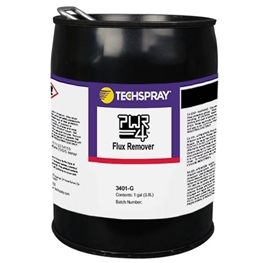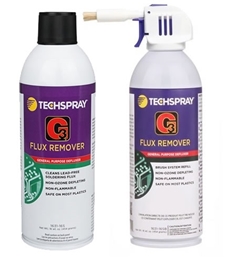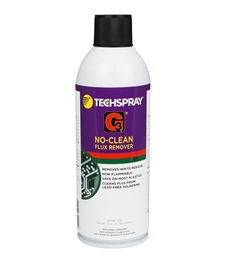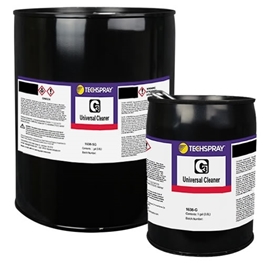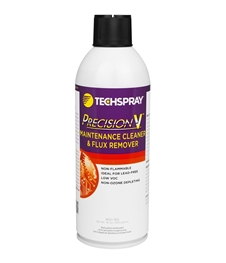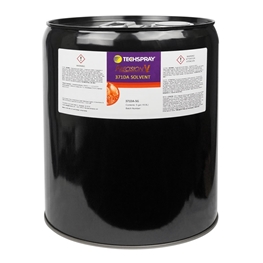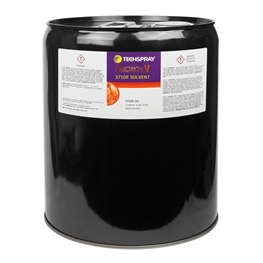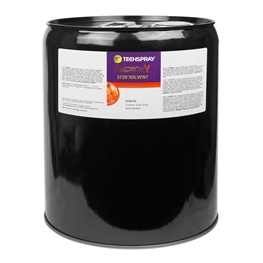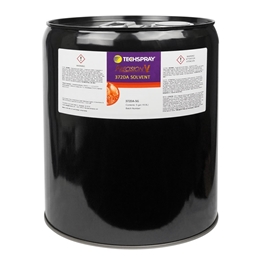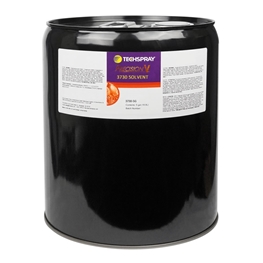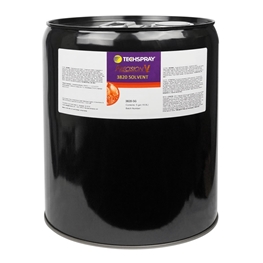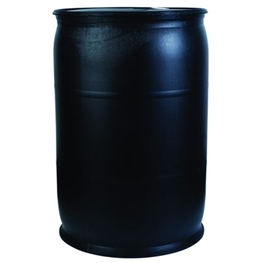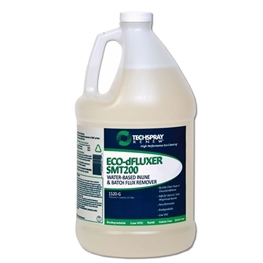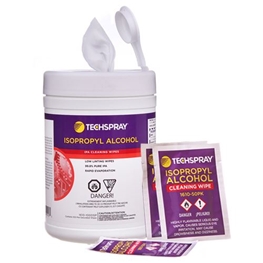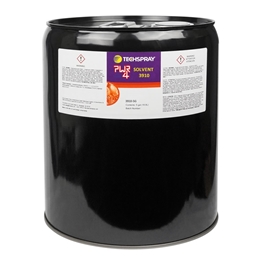Clean Off Flux Contamination & White Residues to Improve Reliability of Electronics
Flux removers (defluxers) remove flux residues and other contaminants left by manufacture, rework, or repair of printed circuit boards. Residues from higher, lead-free temperatures are harder to clean. PWR-4, G3, E-LINE and Precision-V flux removers have been proven very effective at removing fluxes baked on at lead-free temperatures.
Micro-components and fine pitch leads are delicate and easily damaged, so brushing and scrubbing should be avoided if possible. The G3, E-LINE and Precision-V products have a powerful spray and strong solvent that blasts off residues and cleans areas under components that a brush cannot touch.
Techspray offers traditional solvent-based cleaners and cutting-edge water-based technologies marketed under the Techspray Renew brand. For more information, check out our A Thorough Comparison of Water Based Cleaners and Solvent Cleaners.
Techspray Renew branded cleaners are innovative solutions that combine the best of current “green” technologies to make the most powerful eco-friendly cleaners on the market.
All Techspray flux removers have the following advantages:
- Help create bright, shiny solder joints
- Improve PCB reliability
- Prevent conformal coating defects
- Prevent corrosion from contamination
- RoHS compliant
Flammability
Plastic Sensitivity(Choose One)
Environmental & Safety
-
 Low GWP
Low GWP
-
 Low VOC - CARB
Low VOC - CARB
-
 Low VOC - EPA
Low VOC - EPA
-
 Low VOC - EPA NESHAP Compliant
Low VOC - EPA NESHAP Compliant
-
 Low VOC - SCAQMD
Low VOC - SCAQMD
-
 PFAS-free
PFAS-free
-
 VOC-free
VOC-free
Flux Type
Cleaning Method
Applied Filters
FAQ's
Flux is a substance used during soldering to facilitate the flow of molten solder and promote good solder joints. It prevents oxidation of the metal surfaces, enhances wetting, and ensures a reliable electrical connection. However, after soldering, some flux residues may remain on the surface, which can be detrimental if left uncleaned. Flux residues can be conductive and corrosive, potentially causing short circuits, reduced performance, or even long-term damage to the electronic components.
A flux remover is designed to effectively remove these flux residues without causing harm to the electronic components or the circuit board. It typically comes in the form of a spray, liquid, or solvent, and it contains specific chemicals that dissolve and remove the flux residues.
Flux removers vary in their composition, and some may be suitable for cleaning specific types of flux or for different materials. It's essential to choose the right flux remover for the type of flux used in the soldering process and follow the instructions and safety precautions listed in the safety data sheet (SDS).
Proper cleaning of flux residues with a flux remover is crucial for maintaining the reliability and functionality of electronic devices, especially in the manufacturing and repair industries. It helps ensure that soldered connections are clean, free of contamination, and function as intended.
For more information, check out "5 Best Practices for Cleaning High Reliability PCBs"
- Manual cleaning - This can involve aerosol or pump sprays, or solvents in a pan or tray. Agitation can be applied with a brush, swab or wipe. This method is best for low volume cleaning of non-critical electronics (e.g. IPC class 1), because it is operator dependant, so not easily repeatable.
- Ultrasonic - This method uses sonic (sound) waves to create bubbles, which implode on the PCBA surface to break up the flux residues. This is an aggressive cleaning method, which can be a problem for sensitive components (e.g. ceramic). Because the dissolved flux residues flow back into the cleaning solution, the cleaner needs to be monitored and changed often to prevent cross-contamination.
- Vapor degreasing - The cleaning is done either in the vapor phase of a solvent, or submerged in a sump, which often includes ultrasonic action. Since the final rinse always happens in the vapor phase, this is an ideal cleaning method for critical applications where residue cannot be accepted.
- Batch or inline systems - Spray equipment is used to wash, rinse, and dry the PCBAs. Water or water-based cleaners are most commonly used as the cleaning solution. This cleaning method is good for high volume cleaning, and is repeatable enough for critical applicaitons.
1. Flux is being used so liberally that it all isn’t being heated along with the solder.
or
2. The non-ionic residue can impede with the function of the devise either short-term or long-term.


